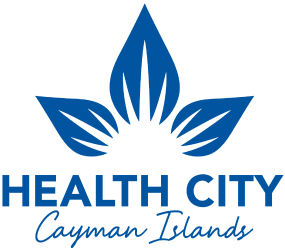
Emergency versus Urgent Care: Understanding When to Seek Help
July 2, 2025
Sarah is preparing dinner while catching up on an episode of her favourite show. She gets distracted by a particularly shocking scene and accidentally slices her finger and a carrot. The cut is deep and bleeding heavily. Should she rush to the Emergency Room (ER) or head to an Urgent Care Clinic? Is this a familiar scenario? Many people are not sure where to seek help when unexpected injuries or illnesses occur. Understanding the difference between emergency and urgent care services can be critical to receiving appropriate and timely medical attention.
What Is Emergency Care?
Emergency care is meant for life-threatening conditions or severe injuries that require immediate, advanced medical attention to prevent serious harm or death. For that reason, emergency rooms are equipped with specialised staff and resources designed to handle complex medical cases.
But what qualifies as an emergency? Here are some examples.
- Severe chest pain or symptoms of a heart attack (e.g., shortness of breath, nausea, sweating)
- Difficulty breathing or signs of a stroke (e.g., sudden weakness, slurred speech)
- Heavy bleeding that cannot be controlled
- Severe burns, fractures, or injuries to the head or spine
- Poisoning or suspected drug overdoses
- Seizures or loss of consciousness
In Sarah’s case, if her cut is bleeding profusely and she cannot stop the flow by applying pressure, she should go to the ER. Delaying care could lead to complications such as significant blood loss or infection.
What Is Urgent Care?
As is the case with emergencies, urgent care situations require prompt medical attention. The difference is these are non-life-threatening conditions.
Here are some situations that are suitable for urgent care.
- Minor cuts, scrapes, or wounds that may need stitches but are not bleeding heavily
- Sprains, strains, or minor fractures (e.g., a broken finger)
- Cold, flu, or mild COVID-19 symptoms like fever and sore throat
- Allergic reactions without breathing difficulties
- Mild infections, such as urinary tract infections or ear infections
For Sarah, if her cut is shallow, the bleeding is manageable with pressure, and she is concerned about needing stitches or a tetanus shot, urgent care would be an appropriate choice.

When to Choose Which
As it can be a challenge to decide where to seek care, it’s worth considering the following:
- Is the condition life-threatening or likely to cause permanent damage without immediate treatment?
- Is the person experiencing symptoms of a heart attack, stroke, or severe allergic reaction?
- Can the condition wait for your regular doctor, or does it require same-day attention?
You may find yourself in a situation where you’re just not sure. In such cases, it’s better to err on the side of caution by calling emergency services or going to the nearest ER.
Appropriate Utilisation of Services
In a study by the United States Census Bureau, it was estimated that approximately 13.7% to 27.1% of all emergency department visits could take place at retail clinics or urgent care centres, potentially saving about $4.4 billion annually in healthcare costs. Additionally, in 2018, the Healthcare Cost and Utilisation Project found that 32.1% of all ER visits were non-urgent, indicating that many patients could have received care at an urgent care clinic.
These numbers highlight a misunderstanding of the appropriate venue for medical issues. Not knowing where to go in these situations may affect the timeliness and suitability of care while simultaneously creating unnecessary healthcare expenditures and putting a strain on emergency services.
Conclusion
Accidents and illnesses can occur unexpectedly, so it’s important to know if you should seek emergency care or visit an urgent care centre. By understanding the distinctions between these services, individuals can make informed decisions, ensuring they receive the appropriate level of care promptly. On a broader scale, this will ensure the efficiency and effectiveness of the healthcare system.













